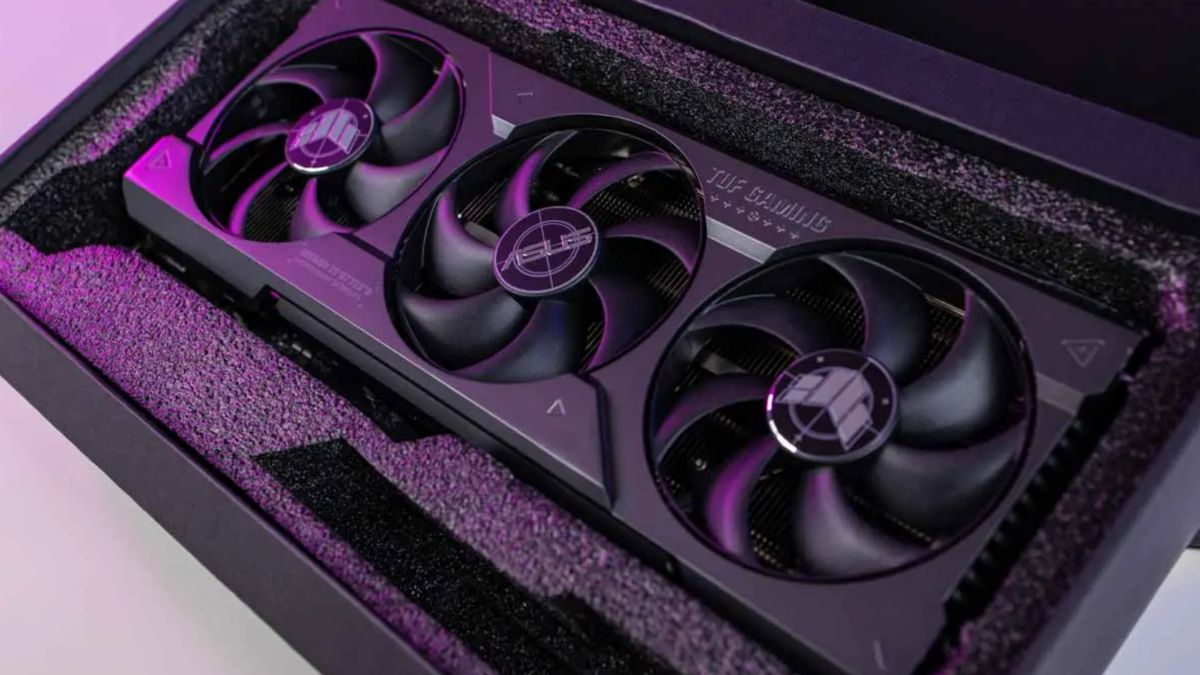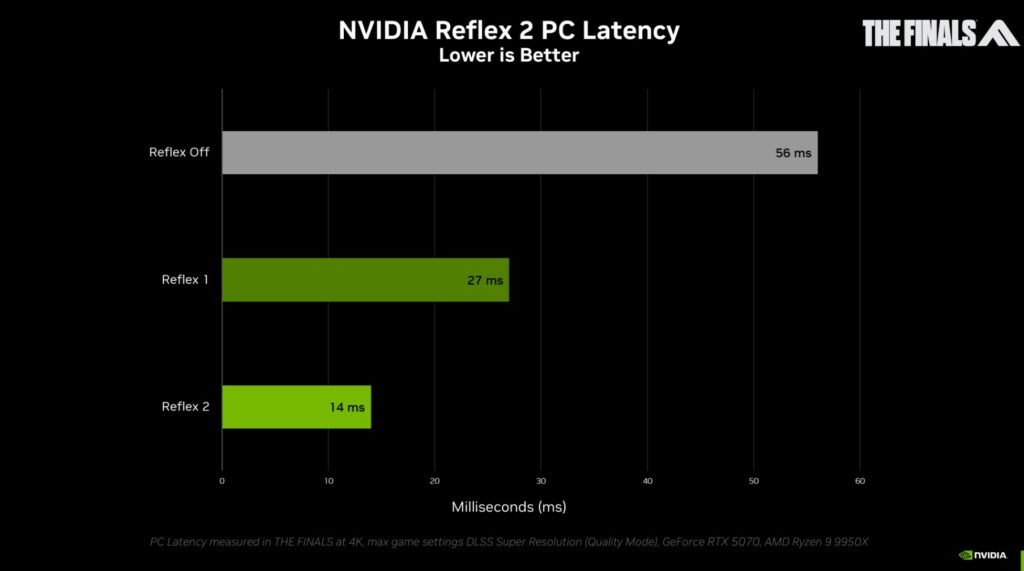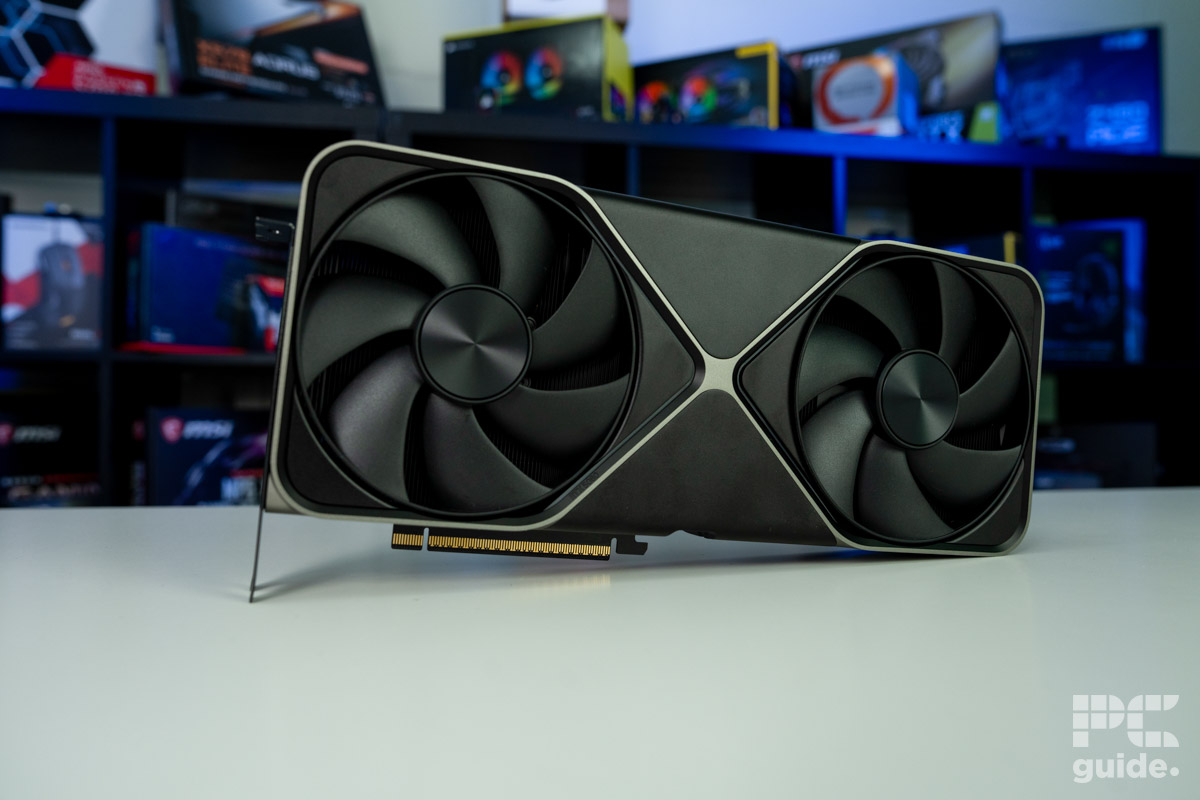RTX 5080 vs RTX 4080 specs comparison – how do they compare?

Table of Contents
During CES 2025, Nvidia finally announced the cards everyone was waiting for: the RTX 50-series lineup. While the company didn’t reveal the entire lineup, they confirmed four GPUs, including the RTX 5080. Ever since the announcement went live, many have been wondering how it stacks up against other cards, and one of the most obvious comparisons would be against its predecessor, the RTX 4080.
The RTX 4080 is a high-end card and in our in-depth review, we found it to be a solid option for 4K gaming. On the other hand, real-world benchmarks of the RTX 5080 are not available yet due to an embargo. However, as Nvidia has shared the official specifications of the card, we have something that we can use the compare it against its predecessor on paper.
Prime Day may have closed its doors, but that hasn't stopped great deals from landing on the web's biggest online retailer. Here are all the best last chance savings from this year's Prime event.
- Sapphire 11348-03-20G Pulse AMD Radeon™ RX 9070 XT Was $779 Now $719
- AMD Ryzen 7 7800X3D 8-Core, 16-Thread Desktop Processor Was $449 Now $341
- Skytech King 95 Gaming PC Desktop, Ryzen 7 9800X3D 4.7 GHz Was $2,899 Now $2,599
- LG 77-Inch Class OLED evo AI 4K C5 Series Smart TV Was $3,696 Now $2,996
- AOC Laptop Computer 16GB RAM 512GB SSD Was $360.99 Now $306.84
- Lexar 2TB NM1090 w/HeatSink SSD PCIe Gen5x4 NVMe M.2 Was $281.97 Now $214.98
- Apple Watch Series 10 GPS + Cellular 42mm case Smartwatch Was $499.99 Now $379.99
- AMD Ryzen 9 5950X 16-core, 32-thread unlocked desktop processor Was $3199.99 Now $279.99
- Garmin vívoactive 5, Health and Fitness GPS Smartwatch Was $299.99 Now $190
*Prices and savings subject to change. Click through to get the current prices.
Here’s how the RTX 5080 and RTX 4080 stack up against each other on paper so far. We’ll update this guide with real-world benchmarks once our review of the card is live, so stay tuned for more information!
RTX 5080 vs RTX 4080 specs comparison
| Specifications | RTX 5080 | RTX 4080 |
| Cores | 10752 | 9728 |
| Base clock speed | 2.30 GHz | 2.21 GHz |
| Boost clock speed | 2.62 GHz | 2.51 GHz |
| Memory | 16 GB GDDR7 | 16 GB GDDR6X |
| Memory interface | 256-bit | 256-bit |
| Memory clock | 30 Gbps | 22.4 Gbps |
| Bandwidth | 960.0 GB/s | 716.8 GB/s |
| TDP | 360W | 320W |
| Power connector | 12V-2×6 | 12V-2×6 |
| Measurements | 304 mm x 137 mm x 40 mm | 310 mm x 140 mm x 61 mm |
| Release date | Jan 2025 | Nov 2022 |
From the table above, you can see that the RTX 5080 has more cores than its predecessor, and also offers better clock speeds, and has a higher bandwidth. However, both have the same amount of VRAM, just that the 5080 has a better memory type.
Memory
Even since details about the RTX 50-series started getting leaked, many fans were hoping to see VRAM upgrades in the new cards, especially for the RTX 5080. However, now that the official specifications are here, it has been confirmed that the card offers 16GB of GDDR7 RAM.
On the other hand, its predecessor, the RTX 4080, also has 16GB of RAM. However, the 5080 packs the latest GDDR7 memory, which is faster than the one featured in the 4080: GDDR6X.
It's a bit disappointing to see that Nvidia hasn't offered a higher amount of memory in the high-end model. AMD is planning to introduce this much VRAM in their upcoming mid-range GPUs. In fact, Intel also recently introduced budget cards with 10 and 12GB VRAM. For the RTX 5080, we were hoping to see at least 20GB of VRAM.
CUDA cores
CUDA cores are an important part of the GPU, as they are responsible for executing and handling multiple tasks simultaneously. So, the more tasks a GPU has, the better performance it will deliver.
When it comes to the core count, the RTX 5080 has 10,752 CUDA cores, while the RTX 4080 has 9,728 CUDA cores. While the difference between the two isn't as big as the RTX 5090 and 4090, the 5080 still offers 1,025 more cores, so it will offer better performance, especially when paired with a better memory type and architecture.
Clock speeds
Clock speeds are also pretty important, as they determine the amount of instructions a card can execute per second. The RTX 5080 operates at a base frequency of 2.30 GHz, but it can go up to 2.62 GHz. On the other hand, the RTX 4080 offers a base and boost clock speed of 2.21 GHz and 2.51 GHz, respectively.
So, it's clear that the RTX 5080 also takes the lead when it comes to speeds. However, do keep in mind that even if it had slightly lower clock speeds than its predecessor, the 5080 still would've managed to offer better performance thanks to more CUDA cores, faster memory type, and the latest Blackwell architecture which offers significant improvements over the predecessor.
Performance
Now, let’s get down to the most important part: the performance. We tested the RTX 4080 Super in multiple games to get an idea about its real-world performance, and we were impressed with how it was able to handle whatever we threw at it with ease.
In Cyberpunk 2077, which is a resource-hungry game, we were able to around 121 FPS at 1440p and 51 FPS at 4K. Keep in mind that we were getting this FPS with everything maxed out and without relying on Nvidia DLSS, which is an upscaling technology designed to boost FPS. On top of that, RT was also disabled.
We then launched Assassin’s Creed Mirage and Avatar: Frontiers of Pandora, which might not be as demanding as Cyberpunk 2077 but still require decent components for smooth performance. At 1440p, we were getting 139 and 116 FPS, respectively, while at 4K, both games were able to hit 95 FPS.
As for the RTX 5080, we’re still waiting for the embargo to get lifted, but once it does, we’ll make sure to update this section with real-world benchmarks.
Sizing
With each generation, Nvidia has made its graphics cards larger. The RTX 4080 was significantly bigger than its predecessor, the RTX 3080. However, this trend has changed with the RTX 50 series. The latest GPUs not only offer more power but are also nearly the same size as the previous generation.
The RTX 4080 FE measures 310 mm × 140 mm × 61 mm (L×W×H), while its successor, the RTX 5080, is smaller at 304 mm × 137 mm × 40 mm. On top of that, the RTX 5080 is a 2-slot card, whereas the RTX 4080 is a 3-slot card. This means the 5080 is thinner despite having a 40W higher TDP, allowing it to take up less space on the motherboard. However, this size applies only to the Founders Edition, as third-party models come in different shapes and sizes.
Features
Nvidia is always focusing on improving its AI technologies, and during CES 2025, it showcased the latest version of its upscaling technology: DLSS 4. For those who don't know, DLSS is an upscaling technology, designed to help boost FPS in games, which is especially useful for those who have weak RTX cards and are unable to get the FPS they need in certain games.
At the moment, RTX users have access to DLSS 3.5, but they'll make a switch to the new version once it launches at the end of this month alongside two RTX 50-series cards. However, while the new upscaling technology will become available to every RTX card user, one of its features, Multi Frame Generation, will be exclusive to RTX 50-series cards.
Multi Frame Generation will provide three additional frames aside from the traditionally rendered one, meaning you'll get a significantly higher performance boost compared to what you were getting before with DLSS 3.5. In fact, Nvidia claimed that the RTX 5070 will offer performance similar to the 4090, and many believe that this will be all thanks to DLSS 4.
So, even though the RTX 5080 will deliver performance better than the 4080 due to its better memory type, clock speeds, architecture, and higher core count, the card will be able to take things to the next level by using DLSS 4. You can also watch Nvidia's official DLSS comparison video below, which shows how the new technology delivered over 100 more FPS than DLSS 3.5 in Cyberpunk 2077.
Aside from that, Nvidia has also announced a brand new version of its latency-reducing technology, Reflex 2. Right now, we have Reflex 1, which can make the gameplay smoother by reducing the latency by almost half. However, the new version will now work together with a feature called Frame Wrap to bring it further down.
In the image below, you can see how Relfex 1 brings the latency down to just 27 ms from 56 ms in The Finals. Then, when Reflex 2 is enabled, it is reduced to only 14 ms, which is very impressive.

With the new DLSS 4 technology and Reflex 2, the RTX 5080 will gain a significant performance improvement over the RTX 4080.
RTX 5080 vs RTX 4080 – price comparison
According to Nvidia, the RTX 5080 will launch with a price tag of $999. This will be for the base model, so you can expect third-party variants to be priced between $1,000 and $1,250.
On the other hand, the RTX 4080 had an MSRP of $1,199 when it was launched. However, these days, you can get it for around $1,500 or even higher, depending on the model.
Early impressions
Based on the specifications shared by Nvidia, the RTX 5080 is shaping up to be a solid card for 4K gaming. It offers more cores, better clock speeds, a higher bandwidth and memory type, and a brand-new architecture compared to its predecessor, the RTX 4080. On top of that, with DLSS 4 and Reflex 2, it will outperform the 4080 by a big margin.
However, it is a bit disappointing to see that Nvidia has not introduced any VRAM upgrades in the RTX 5080. 16 GB of VRAM is something that competitors like AMD are introducing in their mid-range options. High-end cards like the RTX 5080 should at least have 20 GB of VRAM, as video games are getting more and more demanding every year.
In any case, once the review of our card goes live, we’ll make sure to update this page with real-world benchmarks.






